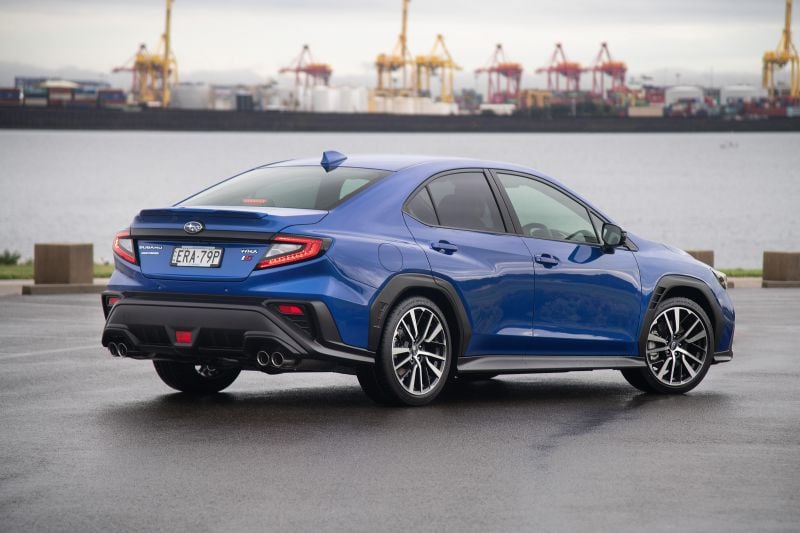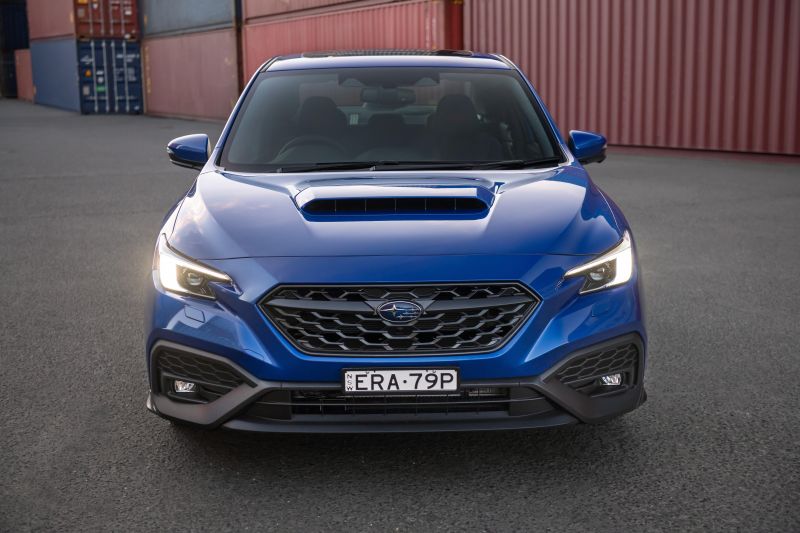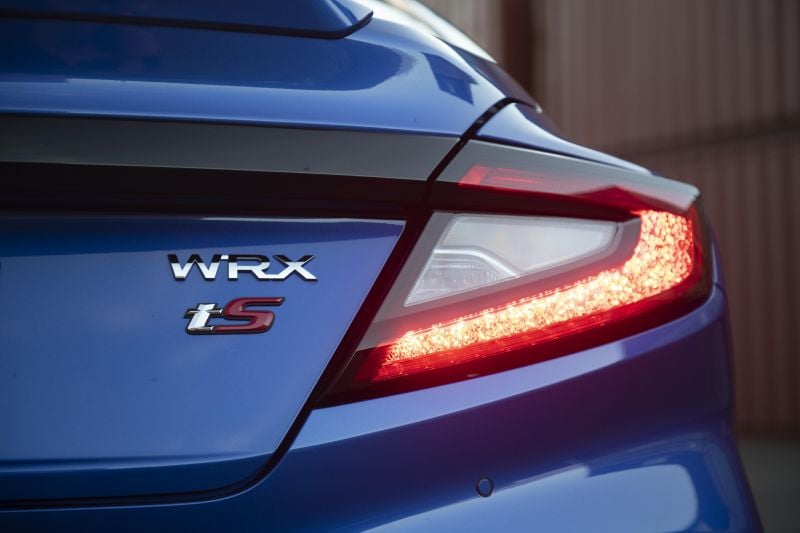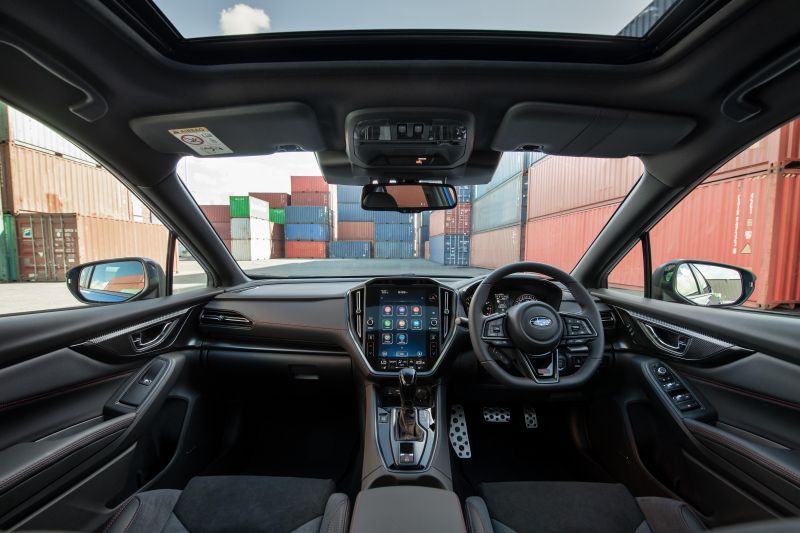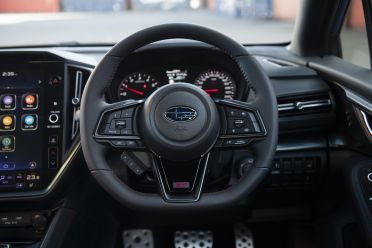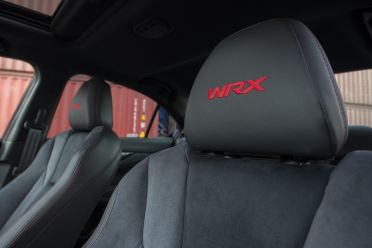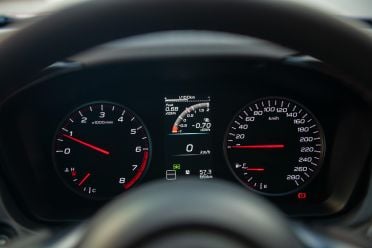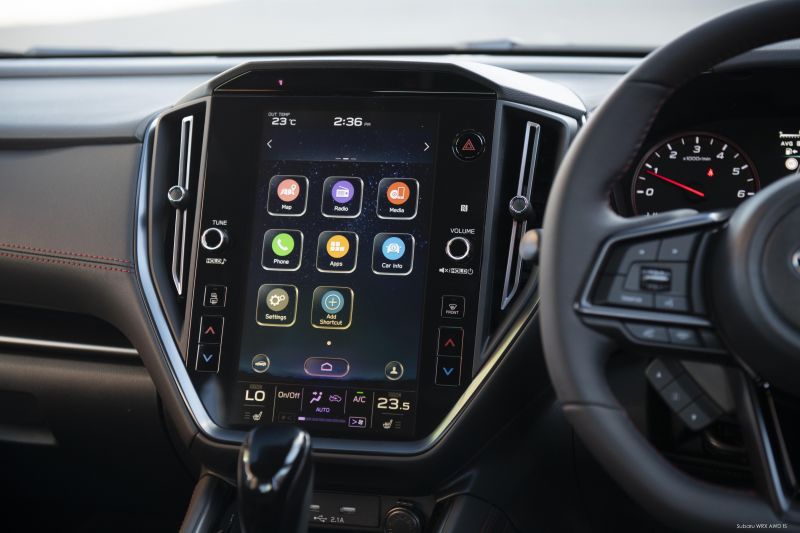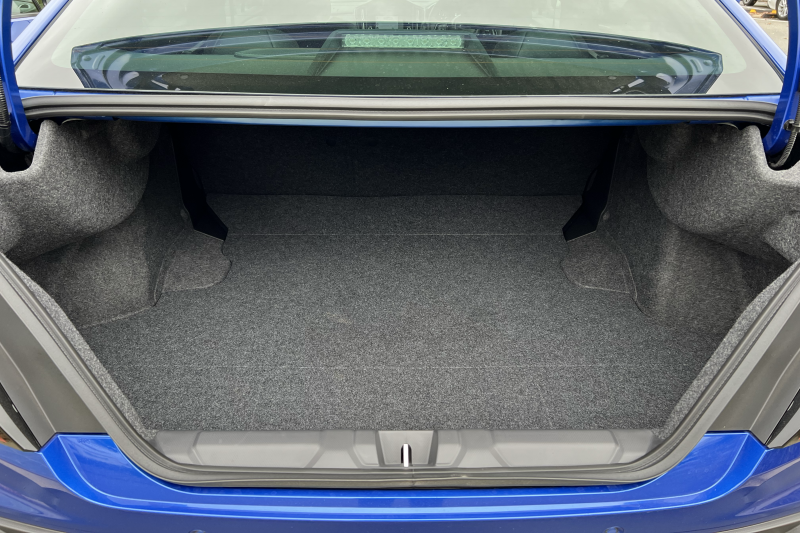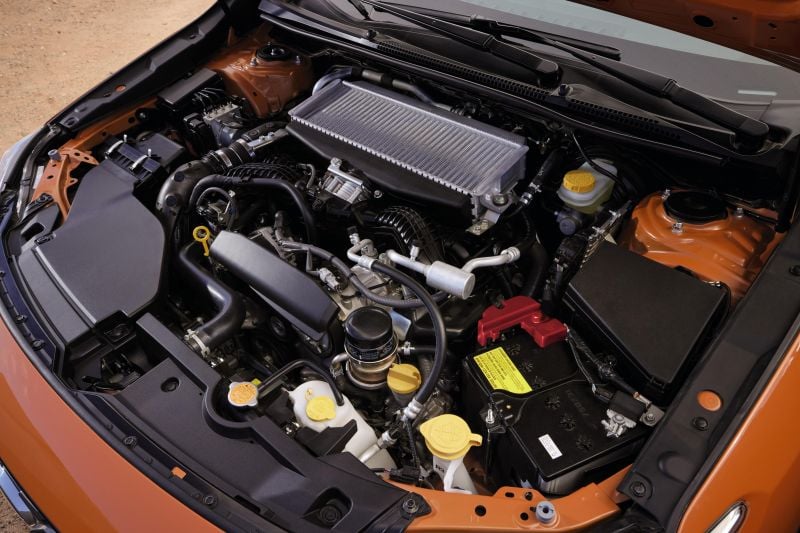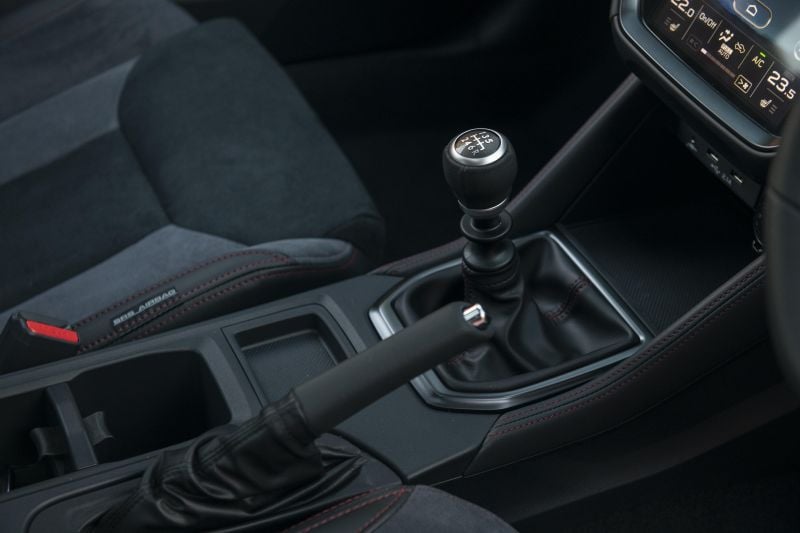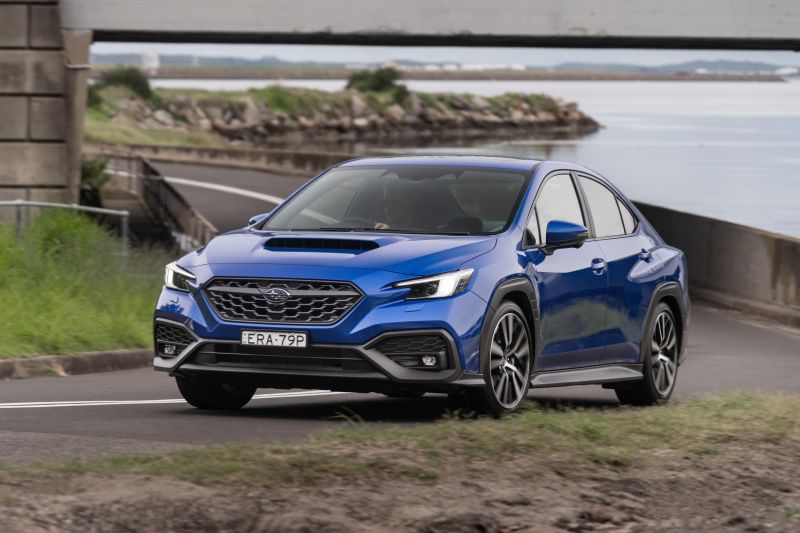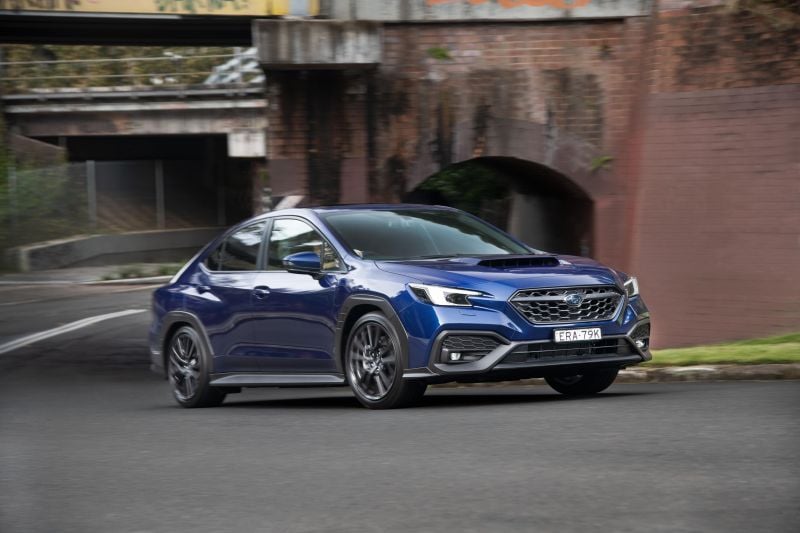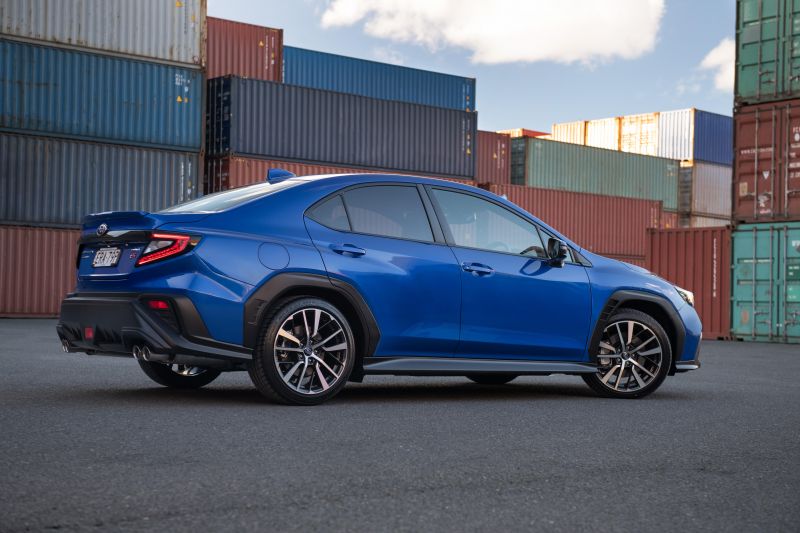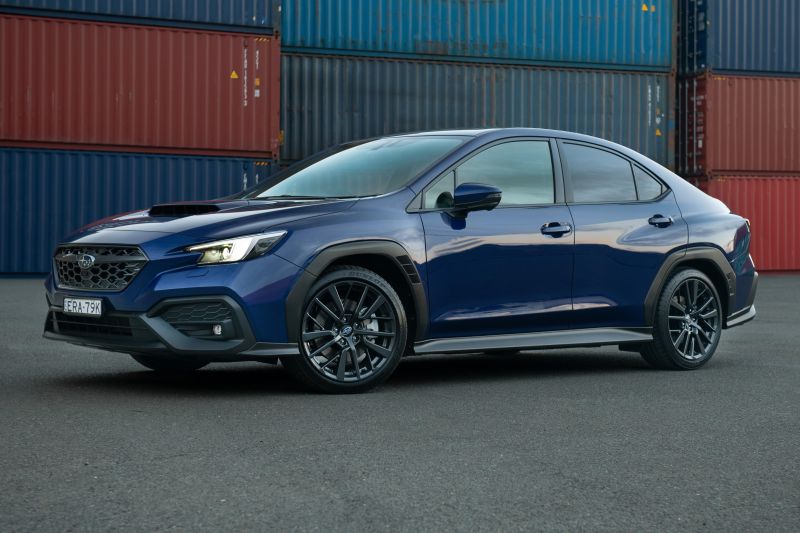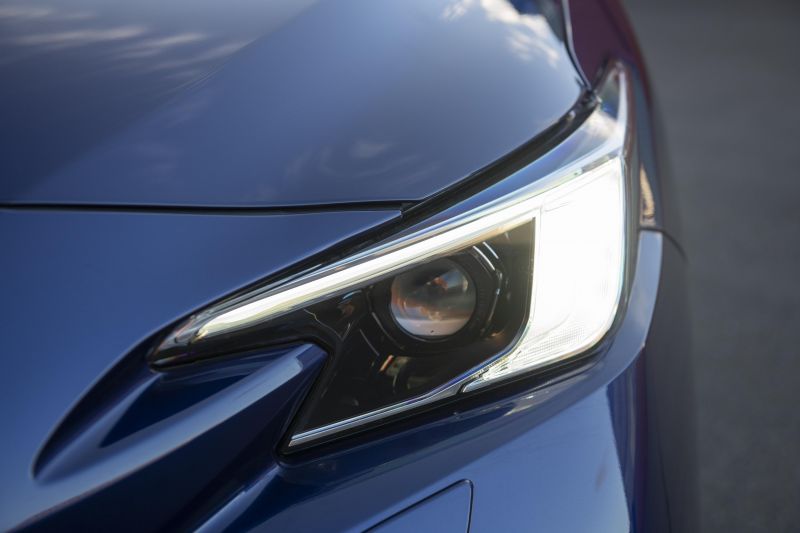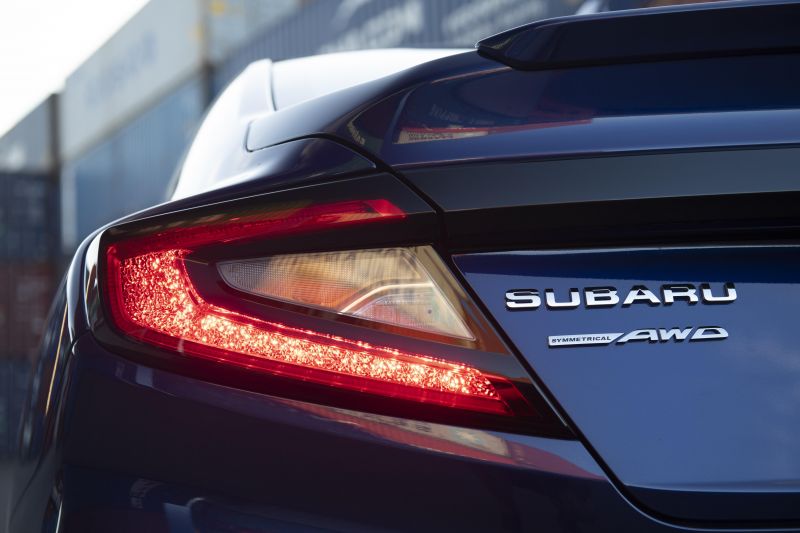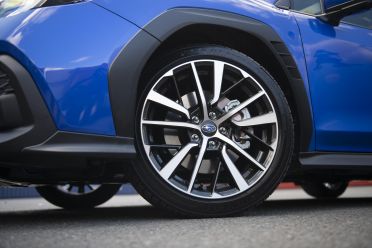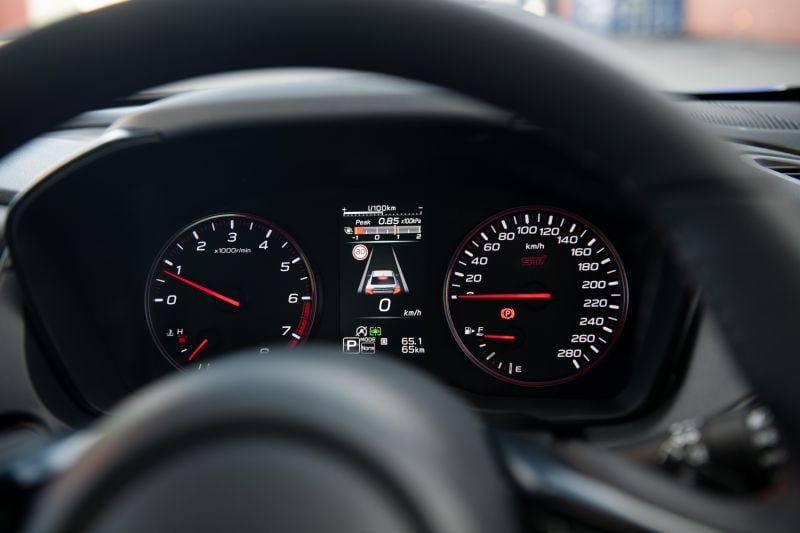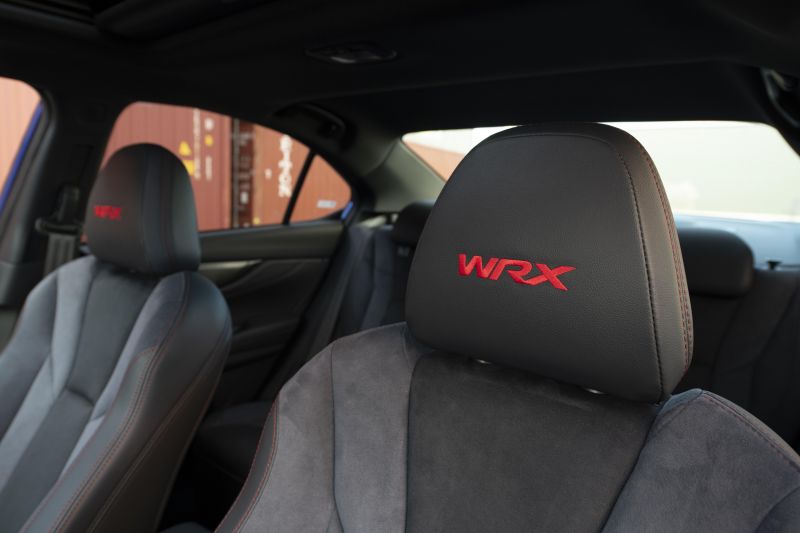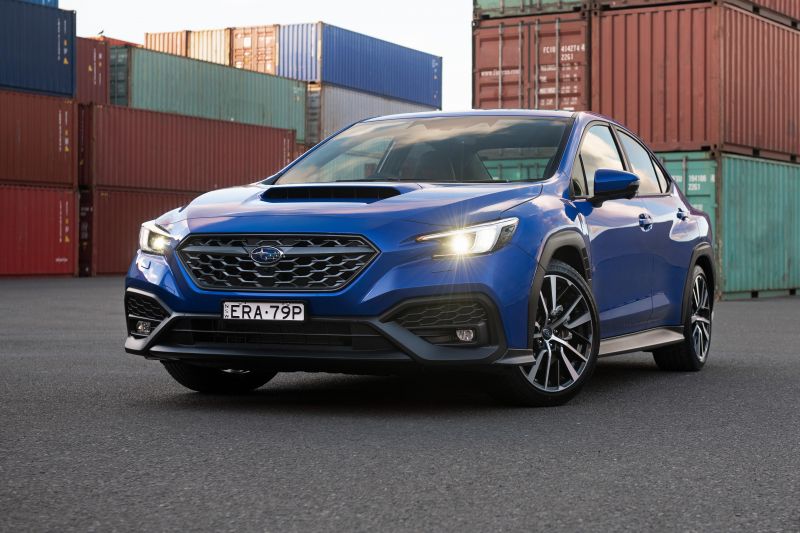The evolution of the Subaru WRX continues.
The all-wheel drive icon is no longer the cheapest way to get your performance kicks, nor is it the supercar slayer it once was. As the automotive world has moved on at light speed, the WRX has trodden its own, more conservative path.
When the first Impreza WRX debuted Down Under in 1995, its 2.0-litre turbocharged boxer engine made 155kW of power.
The second-generation model bumped that to 160kW, the third-generation improved it to 168kW, and the fourth-generation car gained a solitary kilowatt to make 169kW. That output jumped to 195kW in 2009, and 197kW in 2015.
That same 27-year stretch has seen the birth of the 220kW hyper hatchback, the death of the Lancer Evolution that traditionally rivalled the WRX, and the dawn of electric cars redefining what’s possible from an all-wheel drive sedan.
So, has Subaru ripped up the recipe and started fresh for 2022? Not quite, but it’s certainly given the new car a slightly different flavour.
Power in the new WRX still comes from a turbocharged boxer engine, mated with a rally-inspired all-wheel drive system. It makes roundly similar power and torque outputs to its predecessor, too.
But there’s more to this new turbo tearaway than its evolved numbers would suggest. This is the most grown-up WRX ever, designed to appeal to the sort of people who might have turned up their noses at its predecessor.
Parts of this review are shared with our WRX Sportswagon review. To check that out click here.

How much does the Subaru WRX cost?
The WRX range kicks off at a sharp $44,990 before on-road costs, and extends to $57,990 before on-roads for the WRX tS Sportswagon.
The death of the Mitsubishi Lancer Evolution means the WRX rival set looks a bit different to what it once was.
At the bottom end of the range, it lines up with the Hyundai i30 N manual ($44,500), and undercuts the Volkswagen Golf GTI ($54,990), let alone the all-wheel-drive Golf R hatchback or wagon ($65,990-$68,990).
2022 Subaru WRX Sedan pricing
- Subaru WRX manual: $44,990
- Subaru WRX auto: $48,990
- Subaru WRX RS manual: $50,490
- Subaru WRX RS auto: $54,490
- Subaru WRX tS auto: $56,990
All prices exclude on-road costs.
What is the Subaru WRX like on the inside?
The big screen and basic dashboard design lean heavily on parts that’ll be familiar from elsewhere in the Subaru range, but the chunky steering wheel and sporty seats mean the WRX still feels sporty.
The driving position is excellent in cars with power-adjustable seats, with plenty of space for taller drivers. Subaru has done a nice job balancing of bolstering and long-haul comfort, given this is meant to be a more grown-up take on the WRX formula.
WRX emblems and red stitching are on hand to lift the ambience, and you’re able to get a boost gauge atop the trip computer in place of the fuel economy readout that usually sits there.
Subaru’s chunky flat-bottomed wheel feels good in your hands, and most of the things you need to poke and prod fall easily to hand. The inclusion of a drive mode button on the wheel means it’s easy to toggle from Comfort to Sport Sharp in the tS, although you can also do it through the infotainment system.
The vertically-oriented touchscreen takes care of your climate and media, and has swallowed the trip computer Subaru has traditionally situated atop the dashboard.
With sharp graphics and smooth responses, it manages to make moving away from buttons relatively painless. There are prominent shortcuts for commonly-used functions like fan speed, and the physical controls for the volume and temperature are a welcome touch.
It’s a shame things the driver monitoring system (which resets when you turn the car off) is buried in a sub-menu. It’s also a shame Subaru doesn’t offer wireless phone charging, or wireless smartphone mirroring for that matter.
The inbuilt navigation supplied by TomTom has live traffic updates, and is handy if you’re touring in areas with no mobile reception, but Google or Apple Maps are always preferable.
Storage space up front is decent in both the CVT and manual.
The manual features an old-fashioned handbrake in place of the CVT’s electric unit, but still has big cupholders and a broad space beneath the dashboard, while the CVT has a smaller slot below the touchscreen.
Rear seat space is good. Despite its reasonably compact proportions (a Hyundai i30 Sedan is longer), legroom back there is generous enough to seat average-sized adults behind average-sized adults.
Headroom is compromised slightly, but six-footers will be able to get comfortable back there without ruining their hair. A fold-down central armrest is standard, but air vents are only included on CVT models.
A trio of top-tether child seat anchors is joined by two ISOFIX points. Claimed boot space is 414 litres in the base WRX, and 411 litres in the RS and tS.
What’s under the bonnet?
Power for the 2022 WRX range comes from 2.4-litre turbocharged four-cylinder producing 202kW of power. That’s up 400cc and 5kW from the engine available in the previous WRX and Levorg.
Peak torque remains unchanged at 350Nm, but it comes on song between 2000 and 5200rpm, which means it’s available 400rpm earlier and hangs around 200rpm longer.
Buyers have a choice between a six-speed manual or CVT automatic transmission in the sedan; wagons are only offered with the CVT.
Subaru says the engine’s bigger displacement combined with a new turbo packing an electronically-controlled waste gate and air bypass valves deliver more mid-range performance with less turbo lag.
Though the WRX is unusual in being a performance vehicle with a CVT, Subaru has programmed eight “steps” you can toggle between using the paddle shifters.
Subaru says this CVT allows for faster ‘gear changes’ than before, and there’s also a downshift blipping control. This will be the only transmission available on the wagon.
Power is sent to all four wheels through a traditional Subaru all-wheel drive system, backed by an active torque vectoring system.
Claimed fuel economy is 9.9 litres per 100km in the manual, and 8.5L/100km in the CVT.
How does the Subaru WRX drive?
There’s a big distinction between the manual, mid-spec WRX RS we drove on the launch and the range-topping WRX tS CVT with its adaptive dampers.
We’ll get there, but first up the engine. It’s only 400cc larger than the outgoing engine, and packs just 5kW of extra power. There’s also no more torque than before.
In the real world, the new engine is clearly a more versatile and muscular unit than its predecessor. There’s less lag down low than before, and it pulls hard through the mid-range when you really put your foot down. Subaru says the 100km/h sprint time is around the 6.0-second mark, and in the manual that feels pretty accurate.
In a world where even a Hyundai i20 N will dispatch the 100km/h sprint in 6.2 seconds the WRX is still quick enough to put a smile on your face.
There’s plenty of fun to be had hooked up to the six-speed manual transmission. Subaru says the gearbox has been reworked to make it smoother and quieter, but it still feels like a Subaru transmission… which is to say effective, but not the last word in precision.
The pedals are nicely placed for rev-matching, and the new engine responds better to a blip of the throttle than older Subaru engines on the way down the gears. It’s still the enthusiast’s choice, and it’s heartening to hear Subaru expects around 40 per cent of sedan buyers to choose the three-pedal variant.
Don’t write off the CVT – or Subaru Performance Transmission, as the brand likes to call it. It’s smooth and quiet on light throttle inputs, slurring through its eight virtual gear ratios to avoid the unnatural feeling present in some CVT models.
Flicked into Sport Sharp, it does an impressively convincing impression of an automatic transmission.
Not only does it run through the rev range to redline and make fake upshifts, it’ll actually downshift when you lean hard on the brake pedal to keep the engine in its torque band. You’re never going to confuse it for a dual-clutch, but it’s the most convincing CVT I’ve experienced in a performance car.
Coupled with adaptive dampers in the range-topping tS, the transmission makes this a pretty versatile all-rounder.
Comfort mode for the suspension is perfect for long highway stints, and is noticeably more relaxed than the ride in the passively-sprung model. Flicked into Normal it strikes a decent balance between sportiness and pliancy; in its raciest mode it’s probably too firm for daily driving, but offers impressive body control.
Both adaptive and passively-sprung cars handle with the sort of tenacious grip you’d expect of a WRX.
The front end is impressively dialled in, and you can use essentially all the performance, all the time thanks to the traction from the all-wheel drive system. Our drive route involved some of Victoria’s gnarliest alpine roads and the Rex soaked it all up. It’s still a weapon point-to-point.
It’s a shame it’s so quiet, though. No matter the drive mode, no matter how soft the stereo, and no matter how hard you’re pushing the accelerator into the floor it barely raises its voice, with almost none of the boxer warble we’ve come to love sneaking into the cabin.
That means the new WRX is a more refined all-rounder than before. The tinge of yobbishness that characterised previous models is gone from the powertrain, and you could very happily commute in the latest model without feeling like a rally refugee.
It’ll sit on the highway for hours and (save for a chunk of tyre roar) won’t wear you out, and the driver assists on the CVT model are smartly calibrated.
It’s a shame Subaru hasn’t integrated adaptive cruise control into the manual. Some old-fashioned buyers will prefer the lack of assistance, but we know it’s technically possible to sell manual cars with a full suite of electronic aids.
While we’re talking electronic aids… carmakers have been selling performance cars with multi-mode exhausts or in-cabin sound generators for years now. Subaru has focused more on driver customisation in this WRX, and the lack of an exhaust that can go from mild to wild feels like a missed opportunity to ram home the car’s newfound versatility.
It might be more grown up, but this is still a WRX after all.
What do you get?
Standard equipment on the base WRX includes:
- 18-inch alloy wheels
- Automatic LED Steering Responsive Headlights
- Intelligent, Sport and Sport Sharp drive modes
- 11.6-inch touchscreen infotainment system
- Android Auto and Apple CarPlay
- DAB+ digital radio
- 4.2-inch instrument cluster screen
- Six-speaker sound system
- Cloth upholstery
- Keyless entry and start
- Dual-zone climate control
- Split-fold rear seats (60/40 in sedan, 40/20/40 in Sportswagon)
- Rain-sensing wipers
- Power-folding exterior mirrors
- Leather-wrapped steering wheel
- Tilt and telescopic steering wheel
- Tyre pressure monitoring
- Electronic parking brake with auto hold (auto models)
- Paddle shifters (auto models)
- Automatic stop-start (auto models)
The base WRX Sportswagon also includes:
- Reclining and one-touch electronic folding rear seats
- Dual rear charge ports
- Ambient lighting
WRX GT Sportswagon and WRX RS Sedan models add:
- Satellite navigation
- CD player
- Sunroof
- Ultrasuede (sedan) or leather (Sportswagon) upholstery
- Heated front seats
- Heated rear outboard seats
- Eight-way power driver seat
- Electric driver lumbar support
- Eight-way power passenger seat
- Heated, power-folding exterior mirrors with auto-dipping (auto models only)
- Ambient lighting
- LED puddle lights
- Dual rear charge ports
- Front and side view monitors
- Driver Monitoring System
- EyeSight Assist Monitor (auto only)
Only the RS gets a 10-speaker Harmon Kardon sound system, while only the GT Sportswagon gets a hands-free power tailgate and driver seat memory.
WRX tS models also gain:
- Electronically controlled dampers
- Comfort, Normal, Sport, Sport+ and Individual drive modes
- Ultrasuede upholstery
Is the Subaru WRX safe?
The Subaru WRX has yet to be tested by ANCAP, and it’s worth noting manual models miss out on a glut of safety equipment restricted to CVT-equipped variants.
All WRX models come standard with:
- Blind-spot monitoring
- Rear cross-traffic alert
- Front, front-side and curtain airbags
- Driver’s knee airbag and front passenger seat cushion
The RS manual adds driver attention monitoring.
WRX CVT variants gain:
- Autonomous emergency braking (forward and reverse)
- Autonomous emergency steering
- Adaptive cruise control
- Emergency lane-keep assist
- Lane-keep assist with lane centring
- Leading vehicle departure alert
- Automatic high-beam
- Intelligent speed limiter
- Traffic sign recognition
How much does the Subaru WRX cost to run?
All WRX models are backed by a five-year, unlimited-kilometre warranty.
Maintenance is required every 12 months or 15,000km.
The first five services in the CVT will set you back $2365.74, while they cost $2433.06 in the manual using Subaru’s capped-price service schedule.
CarExpert’s Take on the Subaru WRX
In some ways, the new WRX doesn’t deviate too far from its predecessors. It’s still fast and affordable, and still feels unflappable on the sort of tricky roads that’d make some front-wheel drive rivals a bit nervous.
The manual in particular will appeal to keen drivers, while the range-topping tS offers more versatility than any WRX before it thanks to its adaptive dampers. Subaru has even managed to make its CVT feel enthusiast-focused, although it’s never going to fool anyone jumping out of a car with dual-clutch transmission.
It’s a shame you can’t couple the adaptive dampers with a manual transmission at this stage, given some enthusiasts still want to be comfortable. It’s also a shame the car is so quiet. Sure, it’s more grown up, but it’s still a WRX.
The good news is, Subaru has left the door open for more combinations to come Down Under in the future, and hinted that an accessory exhaust could be coming. Failing that, the aftermarket will no doubt have plenty to offer soon.
Click the images for the full gallery
MORE: Everything Subaru WRX

